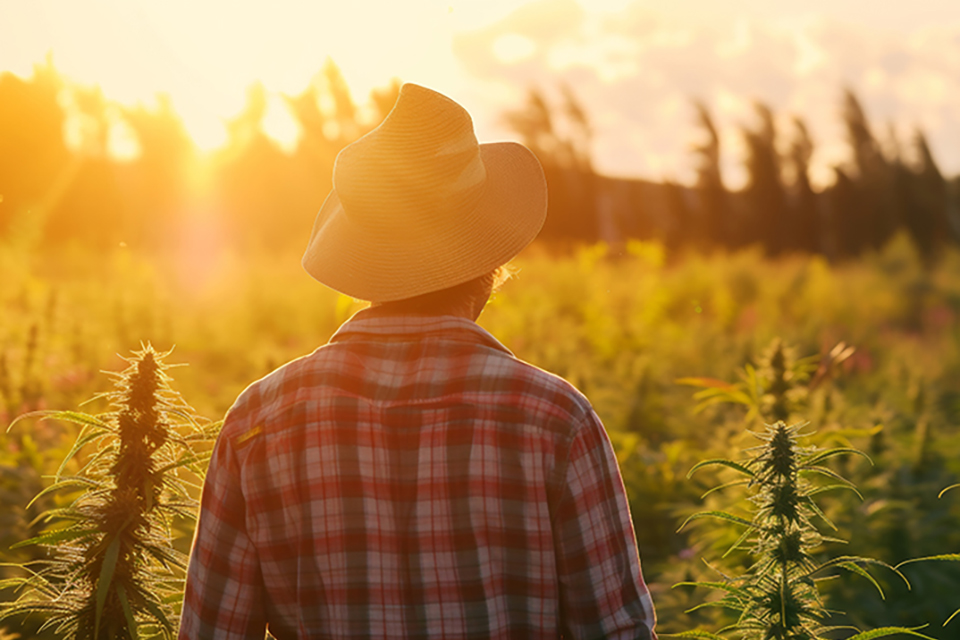
Cannabis cultivation has become increasingly popular among home growers in the USA, with many enthusiasts opting for either micro-growing or macro-growing methods. Understanding the differences between these two approaches leads to successful cultivation.
If you need some help understanding and choosing between micro-growing and macro-growing, learn from the pros at Kind Seed Co. before you start planting.
Micro-Growing Cannabis
Cannabis micro-growing involves cultivating a small number of cannabis plants, usually indoors, to produce high-quality yields on a personal scale. The reduced scale of the operation distinguishes micro-growing from other methods, but the diminutive size shouldn't mislead you into thinking that micro-growing is a simple, straightforward affair.
What Defines Micro-Growing?
Primarily, micro-growing cannabis involves growing a limited number of plants, often in compact and controlled environments such as closets or small grow tents. The cannabis plants in a micro-grow are often kept small through techniques like low-stress training or sea of green setups. This method emphasizes quality over quantity, focusing on generating high-grade cannabis over maximizing the volume of the yield.
Advantages of Micro-Growing
Micro-growing cannabis is an ideal option for those with limited space. Since it's primarily an indoor cultivation technique, even a small apartment or a spare closet could suffice as a micro-grow setup. Additionally, due to the small scale of the operation, the resource requirements—such as water, soil, and nutrients—are significantly lower compared to macro-growing.
It also offers growers complete control over their plants' environment. This means you can fine-tune the temperature, humidity, light intensity, and other factors that impact the plant's growth. Such control allows a grower to customize the conditions according to the specific strain being cultivated, thereby increasing the chance of a successful harvest.
Challenges of Micro-Growing
The main challenge of micro-growing is its limited yield. The smaller scale of the operation means that you will generally harvest less cannabis compared to macro-growing methods.
Despite the smaller space requirements, setting up a micro-grow can still be labor-intensive. It requires investment in specialized equipment such as grow lights, fans, and dehumidifiers. Growers must carefully maintain an optimal and regulated environment for the cannabis plant to thrive. This can be a time-consuming process, particularly for beginners.
Macro-Growing Cannabis
Macro-growing, in contrast to micro-growing, means cultivating cannabis on a large scale. This method is more common among commercial growers who aim for a higher yield, often in outdoor farms or large, indoor hydroponic setups.
What Defines Macro-Growing?
Where micro-growing is all about smaller yields and tight control, macro-growing is focused on producing large quantities of cannabis. It typically involves the use of large plots of land or spacious indoor growth environments coupled with advanced cultivation techniques and machinery to optimize the process.
Advantages of Macro-Growing
The primary advantage of macro-growing lies in its potential for a higher yield. With greater space and more plants, growers can expect a more substantial harvest. This could translate into higher profits for those planning to sell their harvest.
Furthermore, with macro-growing, economies of scale come into play. The larger the operation, the less expensive it becomes to produce each unit of cannabis. This financial efficiency is a significant advantage of macro-growing, especially for commercial growers.
Challenges of Macro-Growing
Macro-growing, while potentially profitable, requires a significant amount of space and resources. Large-scale growing operations need ample land or indoor space, not to mention a significant investment in equipment, staff, and utilities.
The regulatory landscape can also pose challenges for macro-growers, as larger operations often face stricter regulations and licensing requirements compared to smaller, personal-use grows.
Factors to Consider When Choosing
When deciding between micro- or macro-growing, consider your goals, available resources, and local regulations. If you are growing purely for personal use and space is limited, micro-growing could be the ideal solution. On the other hand, if you intend to commercialize your crop and have the necessary resources, macro-growing might be worth exploring.
Comparison of Micro-Growing Vs Macro-Growing
The decision between micro-growing and macro-growing most often comes down to yield versus control. Macro-growing offers the potential for a more substantial yield but requires more space and resources, while micro-growing allows for greater control over growing conditions but typically produces a smaller harvest.
Best Practices and Tips
Choosing the right method for cannabis growing is the only way to properly fulfill your needs. Research the specific strains you plan to cultivate, as they may be more suited to either micro- or macro-growing. Regardless of the scale, opt for quality seeds from reputable seed banks like Kind Seed Co. to ensure a successful yield.
Grow Cannabis at the Right Scale for You
Whether you choose micro-growing or macro-growing, both methods offer unique rewards and challenges. Consider your resources, intent, and local regulations before making any decisions. Cannabis cultivation can be a rewarding pastime or a profitable endeavor, so take the time to explore your options and enjoy the process.






